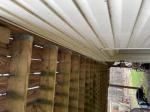Traditional post to joist versus surface mounted post
by Bob
(Missouri)
I have been reading through the text on the different tests for the 6x6 and 4x4 Titan anchors. How do the test results compare to the less modern,traditional methods of connecting rail posts (notching & carriage bolts for example)?
I installed my first 6x6 anchor yesterday and it seems VERY sturdy. I have a piece of 2x12 treated lumber secured to the surrounding joists and rim joists with 8 - 3.5 inch deck screws for added support underneath the deck boards. I would be curious to see what the force rating of the traditional methods are.
Comments for Traditional post to joist versus surface mounted post
|
||
|
||



























